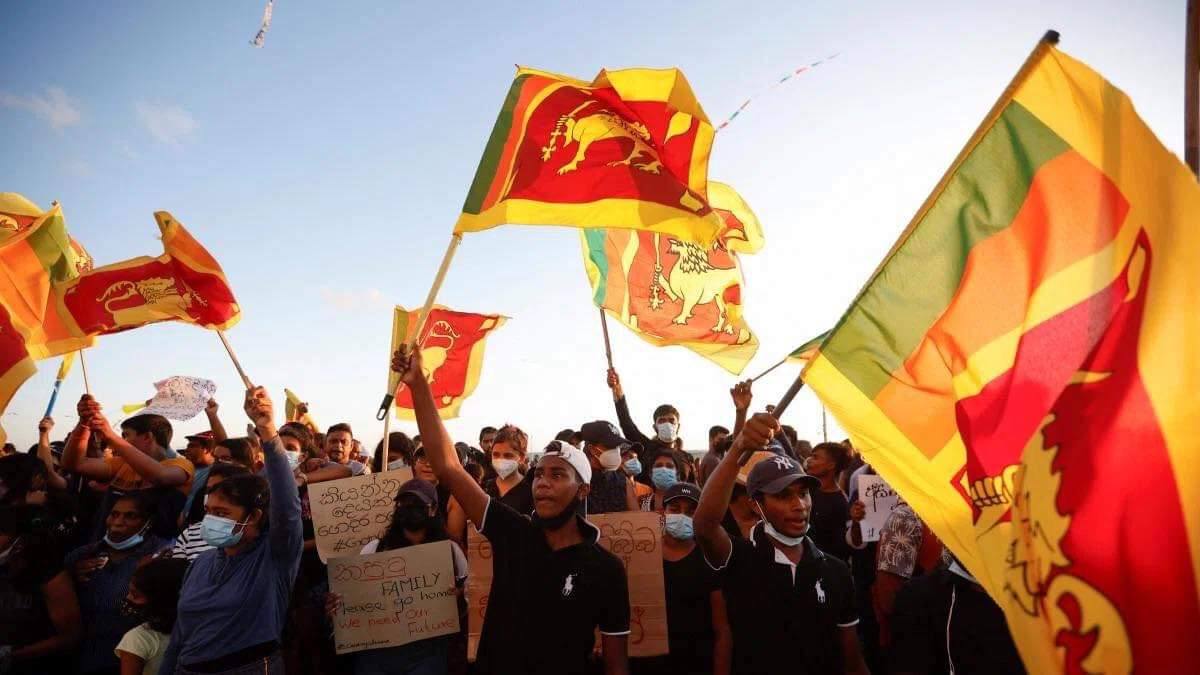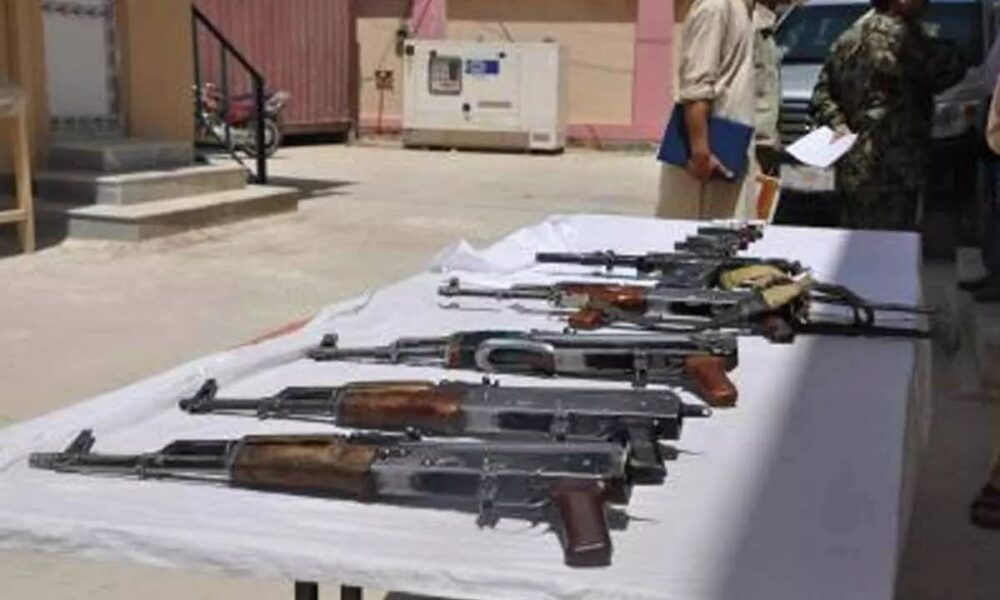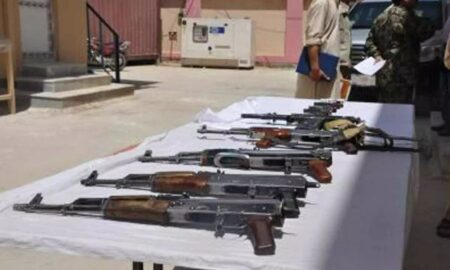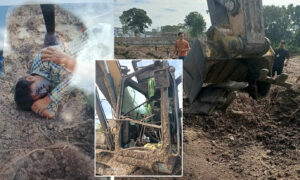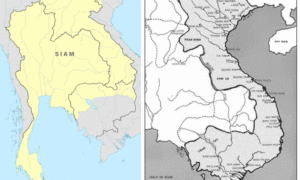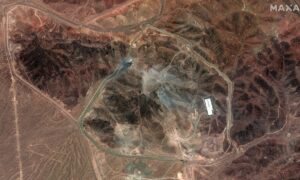The Current Situation and State’s Consequences
During this widespread pandemic, most of the countries obtained an exacerbating economy. Nevertheless, while assessing some of the disastrous nations, Sri Lanka which is located in the Indian Ocean, commits a state crisis due to its debt emergency.
This could have a geopolitical influence and accelerate the debt trap. This occurs when the huge proportion of loans offered for infrastructure, port facilities or manufacturing investment generates future threats together with foreseen fraudulent practice from the projects ( Rajah et al, 2019). These portray the economic-dependent and state ability to compensate , specifically within the global recession with dollar scarcity (Alden, 2020). Its portrait of too much debt triggers state challenges for seeking international loans (IMF) to repay all its creditors, yet much time is required for institution approvals and to examine their loan allowances. The debt amounted to $50bn with 30% inflation and a scarcity of foreign reserves which generated socio-economic destruction and stock shortage (Perera, 2022). This involves the troubled governments within loans control and their blame for global disease.
In particular, it infers protesting, starvation, oil tolls increase, and healthcare crises. Despite measurements such as a newly elected president with a tax system, prohibiting fertile imports that trigger loss in domestic agriculture, printed money, therefore accelerating a damaging dilemma. Accordingly, this entails the country being criticised based on the negligence of harm that triggers constrained payment on their deficit or bond after bypassing the expiration (Hopkins, 2022).
The Causes contributed to the Economic Crisis
Several factors were found to cause economic bankruptcy in Sri Lanka. One of the remarkable causes is COVID-19 pandemic. The pandemic had contributed to declined to the arrival of terrorist about 73% which is the main sector for the country income and tourism-related businesses to shut down that led to lose in revenue. More importantly, the biggest factors in the crisis is that the country has a heavy debt from International organisations such as the IMF and World Bank, and other nations like China, Japan, and India. In the matter of this, Sri Lanka has to pay $7 billion in 2022 of the $25 billion in foreign loans.
The fault should also be put on the government’s policy as well. As of May 2021 the government decided to ban all fertilizer products and require citizens to grow organic agriculture products which has led to a decline in domestic food production and rise in prices. The country’s revenue dropped from $7.6 billion at the end of 2019 to $1.9 billion by the end of March 2022. Last but not least, the country faced a budget deficit in which the government spent about 8.1 billion dollar while receiving income around 7.5 billion dollar in 2020.
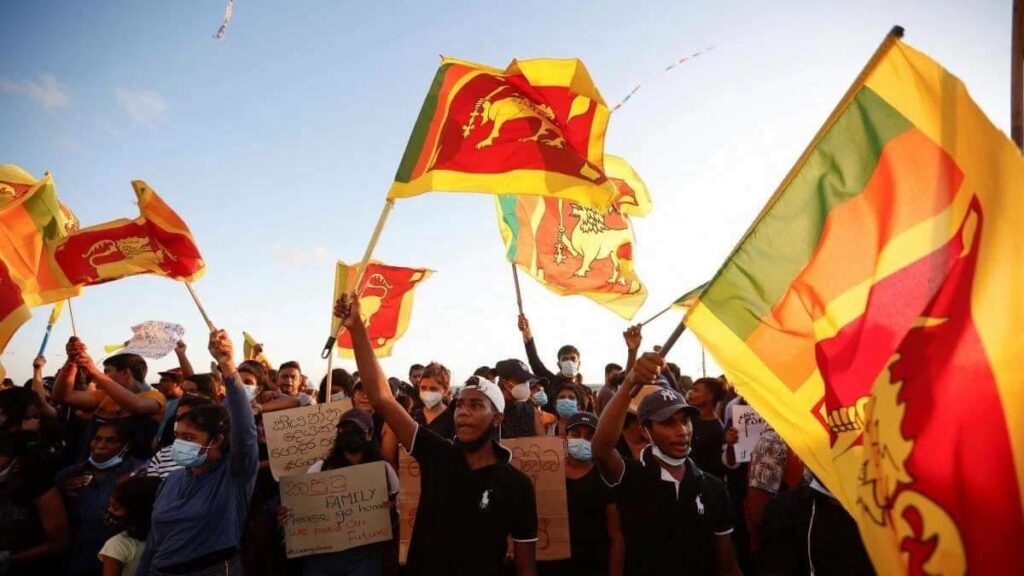
What was the government response?
Beside the cause of foreign debt that the government of Sri Lanka had made, their mismanagement in the market economy also contributed to the crisis as they borrowed vast sums of money to fund public services and imported goods instead of supporting the local economy and exports. Sri Lanka’s government has racked up 51 billion USD in foreign debt (Perera, 2022).
In response to the crisis, there were several measures that Sri Lanka’s government had implemented. The government has removed some taxes on food and medicine, and provided cash for its poorest citizens as prices of essential items surge in the nation that is running out of foreign exchange to pay for imports. The government also decided to increase salaries of public sector staff by 5,000 rupees (25$) (Bloomberg, 2022).
However, some other measures tend to worsen the situation. For instance, the government decided to print more money to pay employee’s salaries which could lead to the rise of price hikes and inflation.
As the public got frustrated due to the shortage of fuel, gas, food, power, as well as the rise of price, mass protests were demonstrated on 31 March. In dealing, the government had deployed excessive and unwarranted police violence against protesters (Throssell, 2022). Moreover, the government also set restrictions in setting time curfews from 6pm and shut down social media for hours.
Remarkably, with the situation getting out of hand, Prime Minister Ranil Wickremesinghe was also expecting help from the international actors such as China, India and other creditor nations, in order to help keep the country’s bankrupt economy afloat. The government had sought emergency loans of $3bn from the International Monetary Fund (IMF) (Macrae, 2022).
International Responses
While the risks were rising, India signed a $1 billion credit line with Sri Lanka through importing essentials such as medicines, food, and India also has lent another $1 billion to the Rajapaksa government. At the same time, China was considering offering the nation island a loan of $1 billion and another $1.5 billion credit facility after providing a loan to the government $1.3 billion and the Central Bank of Sri Lanka (CBSL) with $1.5 billion in order to restructure its debt. (Reuters, 2022).
Yamini Mishra, the South Asia Regional Director for Amnesty International, has urged the international community to step in where possible to support Sri Lanka with essential technical and financial assistance including aid and debt relief. She also continued that the crisis in Sri Lanka is a prime case of the interdependence and correlation of economic, civil political rights, social rights. She added “human rights must be at the heart of discussions on Sri Lanka’s economic future”.
Moreover, the International Monetary Fund (IMF) recommended that social safety nets should be strengthened by improving targeting, widening coverage, and increasing spending, to mitigate the adverse impacts of macroeconomic adjustment on vulnerable groups. (Amnesty International, 2022).
On the other hand, after the declaration of a state of emergency in response to protests over the deepening economic crisis in the country, the UN human rights office (OHCHR) urged authorities in Sri Lanka to resolve tensions peacefully. The OHCHR also reminded authorities in Sri Lanka that actions associated with states of emergency have to conform with international human rights law and should not be used to obstruct peaceful protest or suppress protest. (United Nations, 2022).

Why doesn’t Cambodia experience what Sri Lanka is experiencing?
Cambodia’s external debt has reached over $9 billion dollars at the end of 2021 in which Chinese debt accounted for 43.78%. What the pandemic had done to Sri Lanka’s economy, it also did to Cambodia’s as well. So why Cambodia isn’t facing what Sri Lanka is going through right now?
Cambodia’s national revenue declined while its spending was increasing during the pandemic. This had expanded the national budget deficit. However, according to Aun Pornmoniroth, the deficit is not a problem to Cambodia as the government has additional savings to fulfill. The government had planned to spend $910 million to fight the virus in 2022 and fund to support the economy and society in the medium term (Sarath, 2021).
When it comes to debt, with the country’s revenue, it is manageable. In 2020, the government made debt service payments of about $360 million. Moreover, compared to Cambodia’s total GDP, the external debt in total has not reached the red line yet, and it is still manageable. However, Cambodia’s debt ratio to GDP should not exceed 60 percent of the total GDP.
What can Cambodia learn from this crisis as a small state?
First thing that Cambodia can learn from the issue is that there could be huge consequences from the foreign loans if it is mismanaged. As a small state in today’s world, Cambodia must become independent economically and politically by making sure that the country is not under any country’s influence through loans.
It is crucial that states should have strengthened their domestic institutions in deterring external utilization. Extremely, to assure future stability by improving socio-economic development and to guarantee security by selecting the careful political policy.
States might reduce aid-dependency by retaining a cautious economic norm that is vital for state growth, mainly to obtain the capitalist model of the market economy instead of state plan economy (protectionism). Besides, to expand local exporting or foreign competition with market strategy.
Decision made by Sri Lanka’s government to print more money to ease the issue should be an avoidance for Cambodia. Printing more money could lead to a high rise of inflation and it is not effective enough to solve the economic crisis. When it comes to foreign loans, we believe that the Cambodian government already knows the best way on how the money should be invested in order to earn income to repay. The Cambodian government should avoid investing too much in public service and infrastructure and ignore the consequences.
References:
Alden, C.(2020). China and Africa: Debt, Development and Geopolitics, ISPI. Retrieved from : https://www.ispionline.it/it/pubblicazione/china-and-africa-debt-development-and-geopolitics-27025
Amnesty International. (2022, may 6). Sri Lanka: Rights under attack during economic crisis. Retrieved from: https://www.amnesty.org/en/latest/news/2022/05/sri-lanka-rights-under-attack-during-economic-crisis/
Bloomberg. (2022, January 4). Amid soaring food prices, Sri Lanka unveils US$1 billion in relief. South China Morning Post. Retrieved May 30, 2022, from https://www.scmp.com/news/asia/south-asia/article/3162024/sri-lanka-issue-us1-billion-relief-amid-soaring-food-prices
Dayant, A., Rajah, R., Pryke, J.( 2019, October 21). Ocean of debt ? Belt and road and debt diplomacy in the pacific, Lowry institute. Retrieved from:
Hopkins, P. ( 2022, May 20). Sri Lanka defaults on debt for first time in its history, BBC. Retrieved from : https://www.bbc.com/news/business-61505842.amp
Firstpost. (2022, January). Explained: Why Sri Lanka is on brink of bankruptcy and what the
government is doing. Retrieved from: https://www.firstpost.com/world/explained-why-sri-lanka-is-on-brink-of-bankruptcy-and-what-the-government-is-doing-10325191.html
Macrae, P. (2022, May 30). More than ‘few hundred million dollars’, Sri Lanka needs clarity from China. South China Morning Post. Retrieved May 30, 2022, from https://www.scmp.com/week-asia/politics/article/3179638/china-sri-lankas-all-weather-friend-now-displaying-low-key
Perera, A. (2022, May 20). Sri Lanka: Why is the country in an economic crisis? BBC News. Retrieved May 30, 2022, from https://www.bbc.com/news/world-61028138
Reuters. (2022, may 19). Explained: What led to Sri Lanka’s economic crisis, and who’s helping? Retrieved from: https://indianexpress.com/article/explained/sri-lanka-economic-crisis-explained-7849208/
Sarath, S. (2021, August 19). Cambodia’s foreign debt tops $9 billion, with China accounting for more than 40 percent: Camboja News. Cambodian Journalists Alliance. Retrieved June 7, 2022, from https://cambojanews.com/cambodias-foreign-debt-tops-9-billion-with-china-accounting-for-more-than-40-percent/
The diplomat. (2022, May). Sri Lanka Is on the Brink of Bankruptcy. Retrieved from: https://thediplomat.com/2022/05/sri-lanka-is-on-the-brink-of-bankruptcy/
Throssell, L. (2022, April 5). Sri Lanka: Concern at measures in response to protests amid economic crisis. OHCHR. Retrieved May 30, 2022, from https://www.ohchr.org/en/press-briefing-notes/2022/04/sri-lanka-concern-measures-response-protests-amid-economic-crisis
United Nations News. (2022, April 5). Sri Lanka: Mishandling of economic crisis triggers Alarm over rights violations. Retrieved from: https://news.un.org/en/story/2022 /04/1115552


